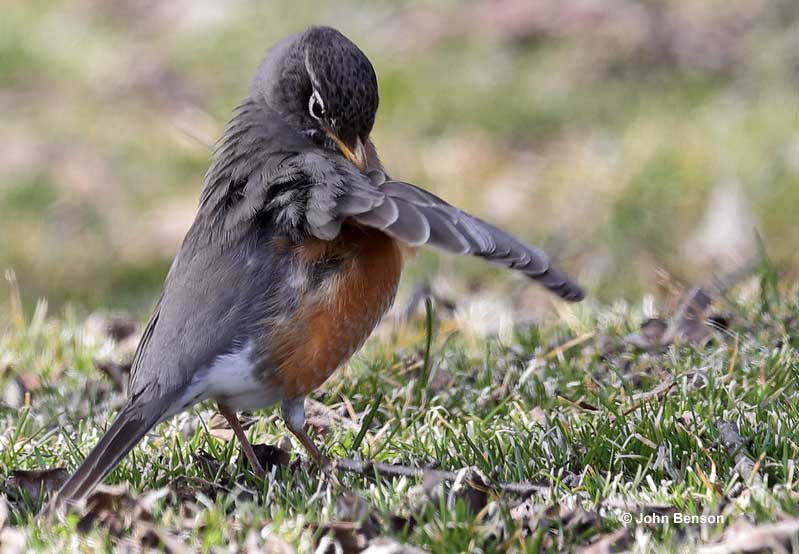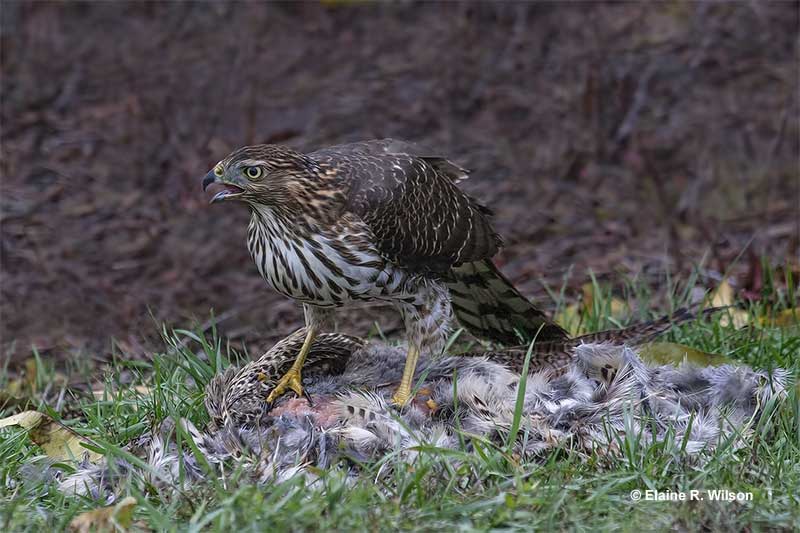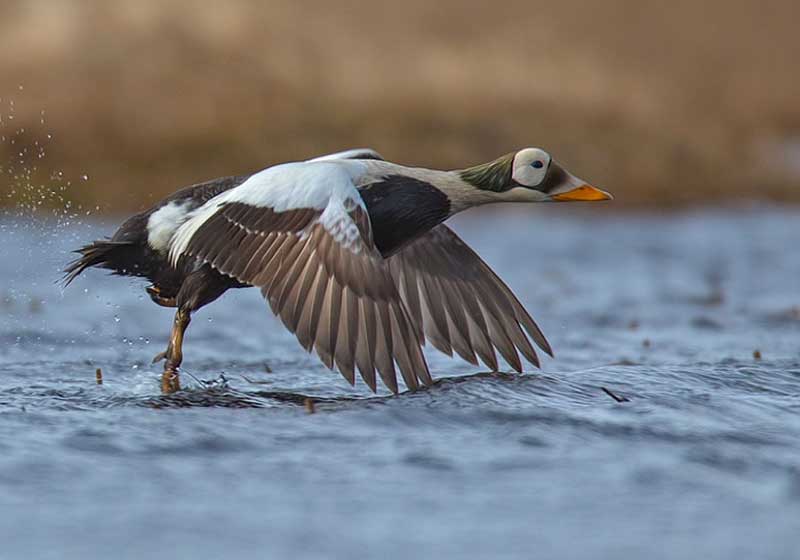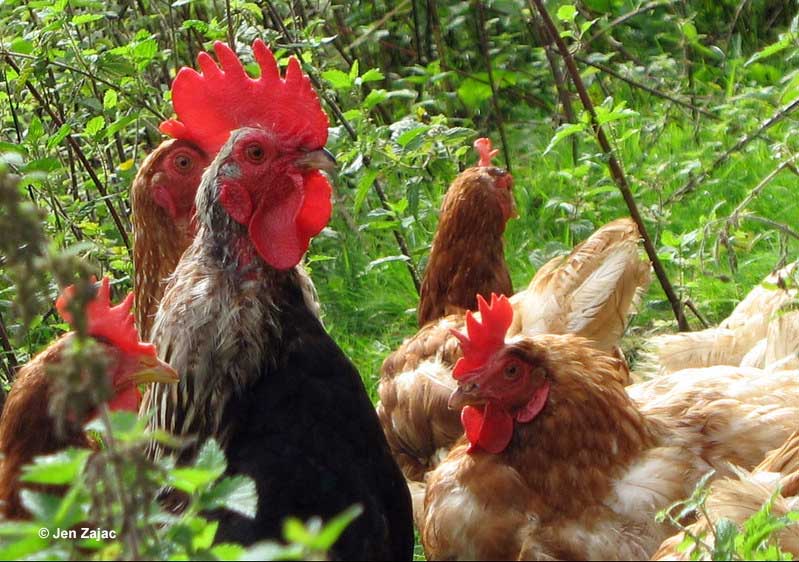Birds can be big, small, brightly colored, highly camouflaged, and even flightless. With so much variety, it’s no wonder we have hundreds of names for different types of birds!
For example, ducks also include Mallards, Gadwalls, scoters, eiders, and mergansers, and some thrush species are bluebirds and robins!
There are a lot of interesting bird names. To help learn about some of them, we made a list of 41 types of birds with five letter names.
Which birds are divers? What is a crake and where do they live?
See this article for answers and more about 41 types of birds with five letter names!
Booby
Boobies are hefty seabirds with a wedge-shaped beak, long, pointed wings, and a wedge-shaped tail. All seven species live in tropical and subtropical seas, where they dive into the water for fish and other small sea creatures.
Some booby species also have colorful feet, and most nest on islands.
Brant
A “Brant” is a type of goose that breeds in the high Arctic tundra and winters in cold, coastal waters. They have mostly black heads and necks, dark grayish backs, and white underparts with some black markings.
Brant migrate in big flocks and graze on grass, algae, and other aquatic vegetation.
Crake
A “Crake” is a name for various types of small rails with short, stubby beaks. For example, if the Sora had another name, we would probably call it something like a “Black-faced Crake”.
Although we don’t have any resident crakes in the USA or Canada, various crake species skulk in low dense vegetation in other places.
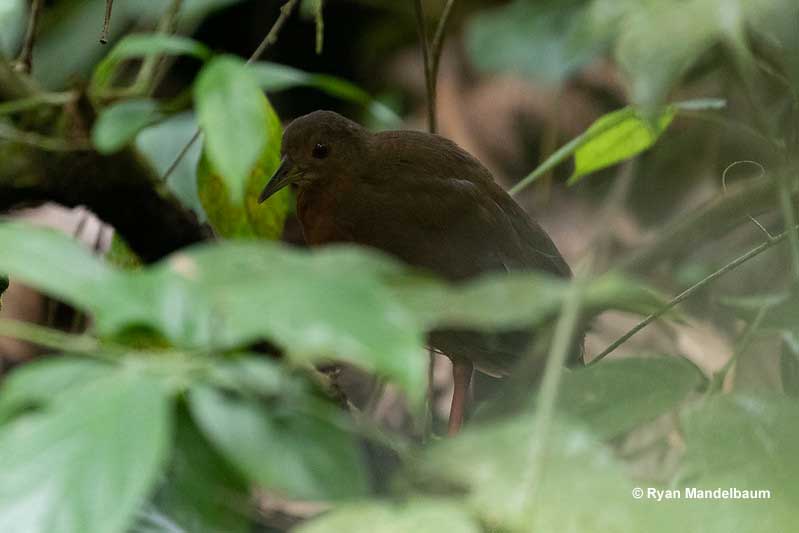
Crane
A “Crane” is a type of tall, wading bird with a short, sharp beak. Although cranes resemble herons and are often confused with those birds, they aren’t related to them.
Cranes usually occur in pairs or flocks and often perform magnificent courtship dances. Watch for cranes in marshes and other wetlands.
Diver
A “Diver” is the British term for a “Loon”. Divers are highly aquatic birds that can barely move on dry land!
However, these hefty birds are fantastic swimmers that catch fish with their sharp beaks. After breeding on cold, northern lakes, divers migrate to coastal waters for the winter.
Eagle
Most people know what an “Eagle” is. These big, powerful birds of prey have been admired by countless cultures for centuries.
In general, eagles are like huge hawks with big beaks and strong talons. They sit at the top of their food chain, and many species have feathered legs. They also build large nests out of sticks.
Egret
An “Egret” is an elegant type of heron that has some decorative plumes in the breeding season. There are several species of egrets, many with brilliant white plumage.
Like other herons, they also have sharp beaks that they use to catch fish, frogs, and other small animals. Egrets live in a variety of shallow wetlands.
Eider
An “Eider” is a big sea duck that breeds in cold, coastal habitats, especially in the Arctic. After breeding, the four eider species migrate to coastal waters where they dive for mollusks and other aquatic creatures.
Male eiders have striking black and white plumage while females have brown, camouflaged feathering.
Finch
A “Finch” is a well-known variety of songbird characterized by a strong, conical beak. There are many finch species and some aren’t even related to each other. However, all are small birds that crack open seeds with strong beaks.
Many finches also sing pretty, warbling songs and tend to have red or yellow and black plumage.
Galah
A “Galah” is a beautiful, medium-sized, pink and gray cockatoo that only lives in Australia. They have long wings, a fluffy, pale pink crest, and often occur in big, noisy flocks.
Galahs live in a variety of habitats including farmlands and parks. These common birds sometimes cause problems by eating crops.
Goose
A “Goose” is a big member of the duck family. Although they aren’t quite as large as swans, geese are still much bigger than ducks.
They have fairly long, thick necks, webbed feet, and long, broad wings. Many geese species have honking calls and form flocks that migrate in “V” formation.
Grebe
A “Grebe” is a small or medium-sized, highly aquatic bird with lobed feet. A few species have become so tied to their watery home, they have become flightless!
All grebes dive underwater to catch small fish, crustaceans, and other small aquatic animals. They also build floating nests and can’t walk on land.
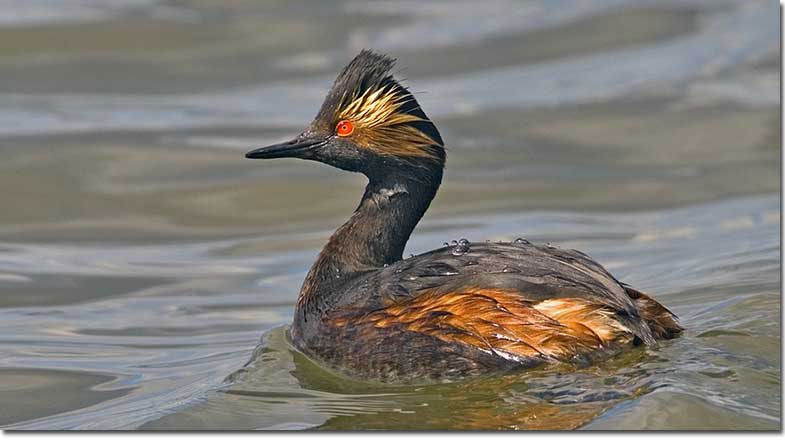
Heron
A “Heron” is a wading bird with long legs, and a long, sharp beak. Herons range in size from the size of a crow to big birds that can stand 5 feet tall.
They like to wade into or stand at the edge of wetlands, and catch fish and other small animals with their sharp beaks.
Hobby
A “Hobby” is a small and handsome falcon a bit larger than a Merlin. There are four species; one in Europe, one in Africa, another in Asia, and the fourth one in Australia.
Each look a bit like a colorful, miniature Peregrine Falcon and all hunt insects, swallows and other fast-flying birds.
Homer
A “Homer” is another name for a “Homing Pigeon”. These are domesticated Rock Pigeons that can fly long distances and still come back to the same place.
For that reason, Homers have been trained to carry messages (especially during the First World War). They are used for pigeon races and can fly as fast as 100 mph!
Junco
A “Junco’ is a small, finch-like bird in the sparrow family. There are five junco species, all of which live in cool or montane habitats from Canada to Panama.
Juncos are plumaged in shades of gray, black, and brown, and usually have white in their tails. In many areas, they are common winter visitors.
Macaw
A “Macaw” is a type of large and colorful parrot with a long, pointed tail, and loud shrieking voice. There have been 18 known macaw species. Two of those species are extinct and some of the others are highly endangered.
Macaws only live in tropical habitats from Mexico to Argentina.
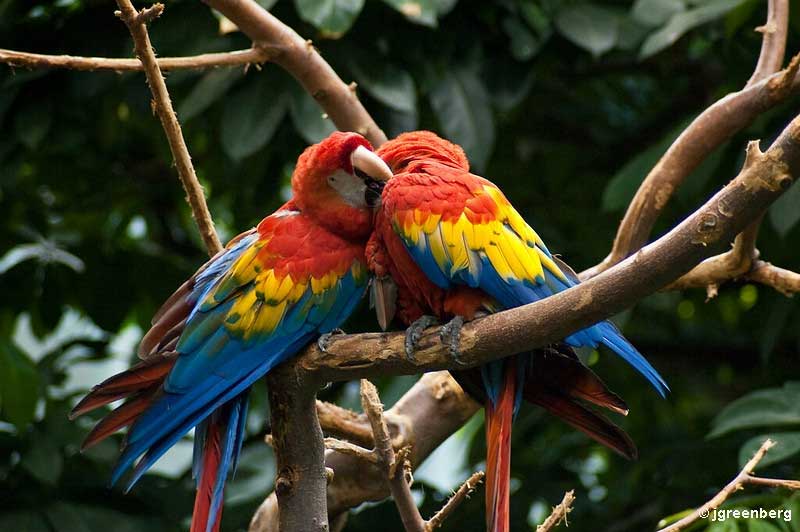
Merle
A “Merle” is a French name for a thrush, especially the Eurasian Blackbird. This species is a lot like the European equivalent of an American Robin.
Eurasian Blackbirds sing a bit like Robins and likewise forage for worms and insects on open lawns. However, Merles have black plumage with an orange eyering and beak.
Miner
A “Miner” is a type of bird in a family that mostly occurs in South America; the “Ovenbirds”. Miners are small, dull-colored birds with sharp beaks that get their name from their breeding behavior.
Miners use their beaks to dig tunnels in dry ground (sometimes 6 feet long) for nesting.
Munia
A “Munia” is a small, finch-like bird with a hefty, conical beak. Most species also have brown and black plumage. Munias live in subtropical and tropical Asia and Australia but a few species have become established in Hawaii and other places.
Munias flock together to feed on grass seeds, grain, and other small seeds.
Mynah
A “Mynah” is a type of starling native to southern Asia. Also known as “Mynas”, there are several species and most have black or dark brown plumage with some white in their wings.
Some species also have yellow on their head, and several are fantastic mimics. Mynahs feed on a variety of fruit and insects.
Noddy
A “Noddy” is a type of elegant tern that lives in warm, tropical oceans. There are five species of Noddy and all have dark brown, blackish, or grayish plumage.
Noddies breed in colonies on remote islands and dive into the water to catch small fish. They also have long, sharp beaks, long wings, and long, rounded tails.
Ousel
An “Ousel” is another name for the White-throated Dipper. Also known as “Ouzel” and “Water Ouzel”, White-throated Dippers forage for aquatic insects in cold, clear streams and rivers.
Like other dipper species, they frequently submerge themselves and walk on the bottom of the river or stream. Ousels are dark brown and black with prominent white throats.
Ouzel
An “Ouzel” is an old name for a thrush or White-throated Dipper. In modern times, it refers to a thrush known as the “Ring Ouzel”.
Ring Ouzels are striking black thrushes with a broad white mark on their chest, grayish wings, and pale scaled markings on their body. They frequent open montane habitats in Europe and western Asia.
Pewit
The “Pewit” is a local name for the Northern Lapwing. This common Eurasian plover has bold dark green and white plumage with black markings and a long wispy crest.
They forage for insects in fields and other open wet habitats. Northern Lapwings also often forms large flocks, and the birds frequently say their name, “Pewit! Pewit!”.
Pipit
A “Pipit” is a small pale brown bird that usually has some streaking on its upperparts. There are many species of pipits and most occur in Eurasia and Africa.
However, two species, the Sprague’s Pipit and the American Pipit, are resident in North America. They and other pipits forage for small insects on open ground.
Pitta
A “Pitta” is a type of beautiful terrestrial, short-tailed bird around the same size as a thrush. A few species live in Africa and Australia but most pittas haunt the floor of tropical forests in Asia.
Several pitta species have jewel-like, red, blue or yellow colors. They make brief whistled calls and are typically hard to see.
Prion
A “Prion” is a small seabird that lives in the cold southern oceans. There are seven species and all forage for small squid, crustaceans, and other small sea creatures in open, pelagic waters.
Prions have a dark “M” pattern on their pale gray upperparts, a black tip on their tails.
Quail
A “Quail” is a small, partridge-like bird with a short tail and strong legs. These little, chicken-like birds use their stubby beaks to feed on insects, grain, and berries.
There are several quail species that occur in most parts of the world. Some have crests and most have camouflaged brown or gray plumage.
Raven
A “Raven” is a big member of the crow and jay family. The familiar Raven is the Common Raven of North America, Eurasia, and North Africa. However, several other raven species live in Africa and Australia.
All ravens are big, smart birds with glossy black plumage. A couple raven species also have some white on their head.
Robin
“Robin” is a bird name used for a few different types of birds. In North America, it’s a familiar thrush, the “American Robin”. In Eurasia and Australia, “Robins” are small, colorful chats with short tails and longish legs.
Robins are insectivorous songbird and several also feed on berries. Most Robins also have beautiful songs.
Saker
A “Saker” is a type of large, powerful, and endangered falcon. Sakers are pale brown above with small dark markings on pale underparts, and some dark markings on the underside of their wings and “wing pits”.
Sakers mostly hunt small mammals and birds on wide open plains in eastern Europe and central Asia.
Scaup
A “Scaup” is a type of diving duck. The Greater Scaup and Lesser Scaup breed in northern wetlands and winter on large bodies of water.
Males have bluish beaks and are mottled gray above and white below with black on their head, chest, and rear end. Females are mostly dark brown with white on their face and belly.
Serin
A “Serin” is a small finch with a conical beak. There are several species of Serins and some are closely related to canaries. They have streaked, pale brown and yellow plumage and live in Europe and Africa.
These small birds have lovely, melodic songs and forage for seeds and insects on and near the ground.
Snipe
A “Snipe” is a small or medium-sized sandpiper with a long, straight beak. Several species live in marshy habitats on every continent except Antarctica.
All Snipes have streaked brown and buff plumage that camouflages them very well in wet, grassy vegetation. They probe the muddy ground for arthropods and call during display flight, especially at night.
Stilt
A “Stilt” is an elegant shorebird with a long, needle-like beak and elongated reddish legs. There are five species, and all pick small bugs from shallow water in various parts of the world.
Stilts are black and white although one species, the Black Stilt, is an endangered species with black plumage that only lives in New Zealand.
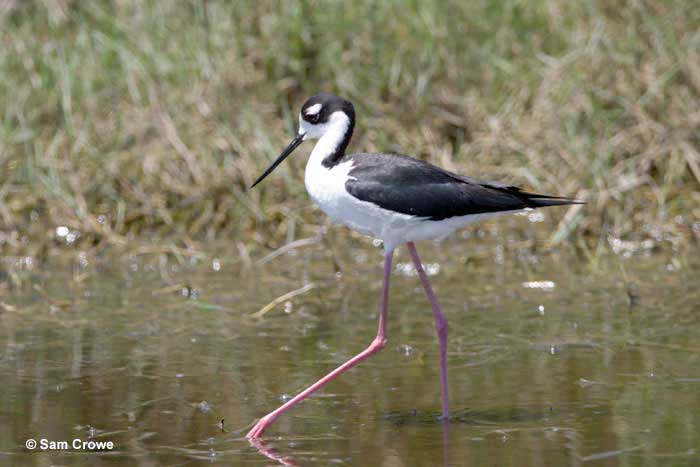
Stork
A “Stork” is a tall wading bird with long legs, a long neck, and a large beak. There are 20 species but only one, the Wood Stork, is regular in North America.
Most stork species have black and white plumage and some have huge, colorful bills. Storks catch fish and other small animals in extensive wetland habitats.
Swift
A “Swift” is a small bird that feeds on insects during fast flight. There are many swift species around the world and most are dark gray or dark brown.
Swifts have tubular bodies and can have short tails, or longer, forked ones. They also have long pointed wings and breed in chimneys, tree cavities, in caves, and behind waterfalls.
Twite
A “Twite” is a small finch with a small beak, and plain brown, streaked plumage. It also has white on its underparts and some white in its wings and tail.
Twites breed in montane habitats in northern Europe and central Asia, and winter in lower elevations in Europe and Asia.
Veery
Veeries are types of thrushes that breed in North American woodlands and migrate all the way to southern Brazil!
The Veery is reddish-brown above and pale gray below with some pale brown spotting on its chest. This small thrush forages for insects and other arthropods on and near the ground.
Vireo
Vireos are small, warbler-like birds with small, hooked beaks. There are many species of vireos, several of which breed in North America.
These small, vocal birds are plumaged in olive, green, and gray, and several have markings near their eyes. Vireos carefully forage in vegetation for larvae and other arthropods.
